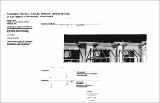| dc.contributor.advisor | Jan Wampler. | en_US |
| dc.contributor.author | Groh, Paul H. (Paul Henry) | en_US |
| dc.contributor.other | Massachusetts Institute of Technology. Department of Architecture. | en_US |
| dc.coverage.spatial | n-us-ma | en_US |
| dc.date.accessioned | 2013-05-29T19:48:43Z | |
| dc.date.available | 2013-05-29T19:48:43Z | |
| dc.date.copyright | 1991 | en_US |
| dc.date.issued | 1991 | en_US |
| dc.identifier.uri | http://hdl.handle.net/1721.1/79015 | |
| dc.description | Thesis (M. Arch.)--Massachusetts Institute of Technology, Dept. of Architecture, 1991. | en_US |
| dc.description | Includes bibliographical references (leave 42). | en_US |
| dc.description.abstract | We spend a majority of our lives in and around architecture; it is through architecture that we know our world. Architecture has the ability to orient us in our environment by telling us where we are in place as well as in time. Architecture infonns us about and helps us interpret our natural, social, and technological environments; it is through architecture that these environments can and should be revealed to us. Today, especially in the density of our urban landscape, architecture does little to orient us in the natural environment. The cycles and rhythms in the natural environment such as the movements of the heavens, or the seasonal changes in the wind and rain are rarely experienced through our architecture. Understanding these cycles gives us the ability to gage where we are in both time and place. These rhythms give us an understanding of time not abstracted and dictated by the clock. They 'deal with the reality of things we can observe and understand phenomenally through changes, transformations and the passing of events. They give us an understanding of place by being highly specific to where we live. My thesis is an exploration of how architecture can become a vehicle for understanding and revealing these processes and cycles in the natural environment. In my thesis, I am taking the attitude that architecture should not be merely a window to these natural cycles but rather a filter that selectively reveals them to us. The vehicle for this exploration is an AIDS hospice in Provincetown, Massachusetts. It is in such a context of the chronically ill that I believe an understanding of natural cycles would be especially beneficial to a persons well being. | en_US |
| dc.description.statementofresponsibility | by Paul H. Groh. | en_US |
| dc.format.extent | 42 leaves | en_US |
| dc.language.iso | eng | en_US |
| dc.publisher | Massachusetts Institute of Technology | en_US |
| dc.rights | M.I.T. theses are protected by
copyright. They may be viewed from this source for any purpose, but
reproduction or distribution in any format is prohibited without written
permission. See provided URL for inquiries about permission. | en_US |
| dc.rights.uri | http://dspace.mit.edu/handle/1721.1/7582 | en_US |
| dc.subject | Architecture. | en_US |
| dc.title | Revealing natural cycles through architecture : an AIDS hospice in Provincetown, Massachusetts | en_US |
| dc.title.alternative | AIDS hospice in Provincetown, Massachusetts. | en_US |
| dc.type | Thesis | en_US |
| dc.description.degree | M.Arch. | en_US |
| dc.contributor.department | Massachusetts Institute of Technology. Department of Architecture | |
| dc.identifier.oclc | 24866960 | en_US |
